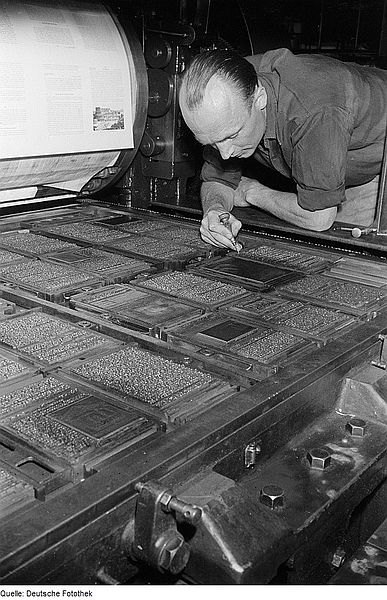In letterpress printing, wood type is movable type made out of wood. First used in China for printing body text, wood type became popular during the nineteenth century for making large display typefaces for printing posters, because it was lighter and cheaper than large sizes of metal type.
Wood type in close-up
Exhibition poster by Alan Kitching, who often uses wood type in his work
Wooden movable types in the China Printing Museum, Beijing
Large display type, cut by Hendrik van den Keere in wood and reproduced by sandcasting
Letterpress printing is a technique of relief printing for producing many copies by repeated direct impression of an inked, raised surface against individual sheets of paper or a continuous roll of paper. A worker composes and locks movable type into the "bed" or "chase" of a press, inks it, and presses paper against it to transfer the ink from the type, which creates an impression on the paper.
A printer in Leipzig inspecting a large forme of type on a cylinder press in 1952. Each of the islands of text represents a single page. The darker blocks are images. The whole bed of type is printed on a single sheet of paper, which is then folded and cut to form many individual pages of a book.
Printer operating a Gutenberg-style screw press
1917 press room, using a line shaft power system. At right are several small platen jobbing presses, at left, a cylinder press.
Proof press, 1850








